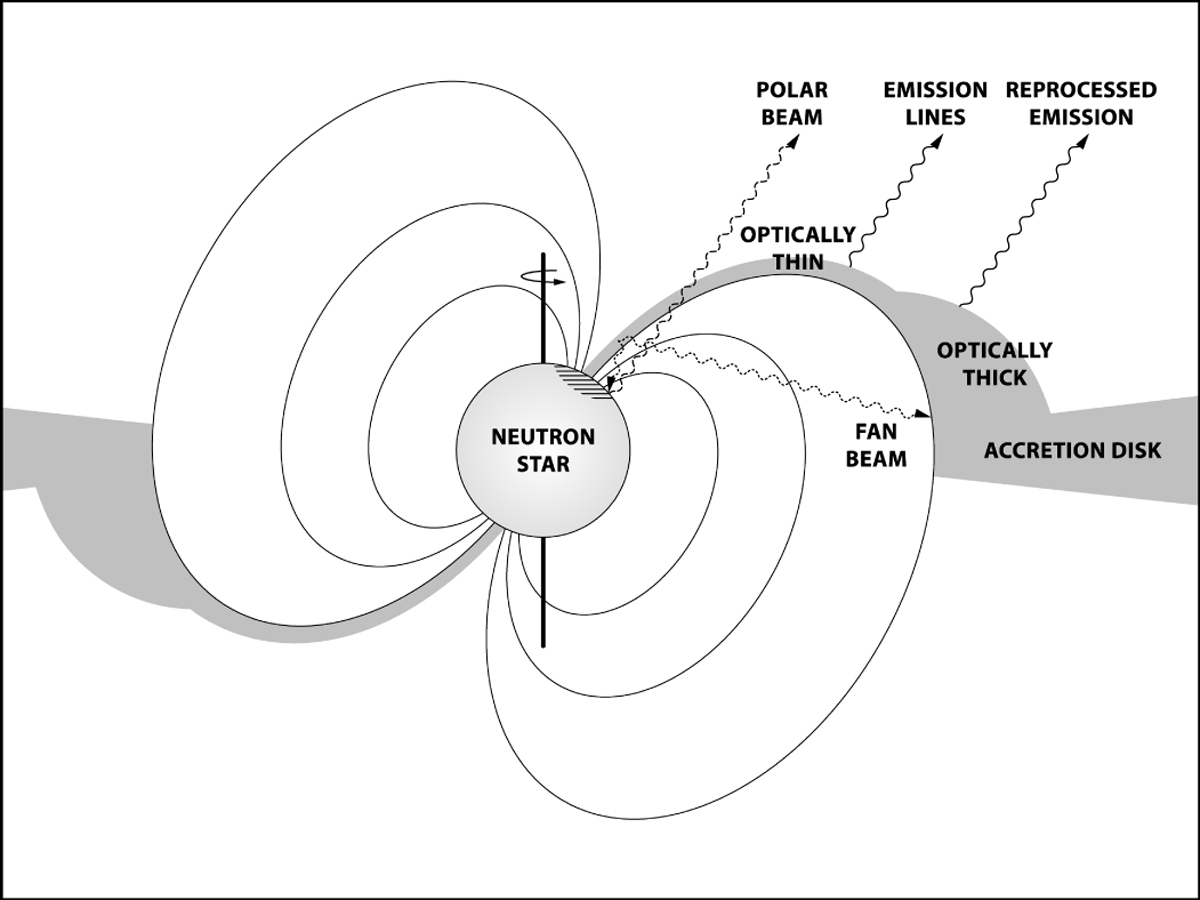Fig. 16

Schematic representation of the proposed structural configuration of X-ray pulsars in the moderately high accretion regime. The(possibly inflated) accretion disk is truncated at approximately the magnetosphere, and a combination of optically thick and thin plasma is trapped at the magnetopsheric boundary. The optically thick material (and the inner disk edge) partially cover the primary emission source and reprocess its emission. At higher latitudes, the material remains optically thin. This is the origin of the emission lines. The source of the primary emission is located at a some height above the NS pole, inside the accretion column. We stress that the drawing is aimed to better illustrate the discussed configuration and does not attempt to realistically reproduce the geometry of an accreting highly magnetized NS. More specifically, for viewing clarity, the emission pattern and direction of the fan and polar beams has been oversimplified and the inner disk radius (and size of the magnetosphere) has been greatly depreciated (e.g., in a more realistic example, both components may illuminate the reprocessing region). The regions where the optically thin and thick plasma are expected to lie have also been presented in a very simplified minimalistic arrangement.
Current usage metrics show cumulative count of Article Views (full-text article views including HTML views, PDF and ePub downloads, according to the available data) and Abstracts Views on Vision4Press platform.
Data correspond to usage on the plateform after 2015. The current usage metrics is available 48-96 hours after online publication and is updated daily on week days.
Initial download of the metrics may take a while.


